Ask most C-level business leaders to look back 20 or 30 years and compare their top three business challenges back then to those of today, and I think it would be a safe bet that “adapting to change” would still be at the top. Surprising? Not really, considering we are creatures of habit and typically change our ways only if things are forced upon us, even when change can actually make our work and personal lives more connected, convenient, and collaborative.
Today, it is a pretty safe assumption that even the most innovative enterprises still face technology and process evolution challenges. Recent data from IDC’s Future of Connectedness Survey highlights the fact that aligning budgets, technology, skills requirements, and IT capabilities rank as some of the biggest challenges. Change on a macro scale is always hard to accomplish, especially when it involves comprehensive changes in the way people interact with other employees, systems, customers, and related technologies.
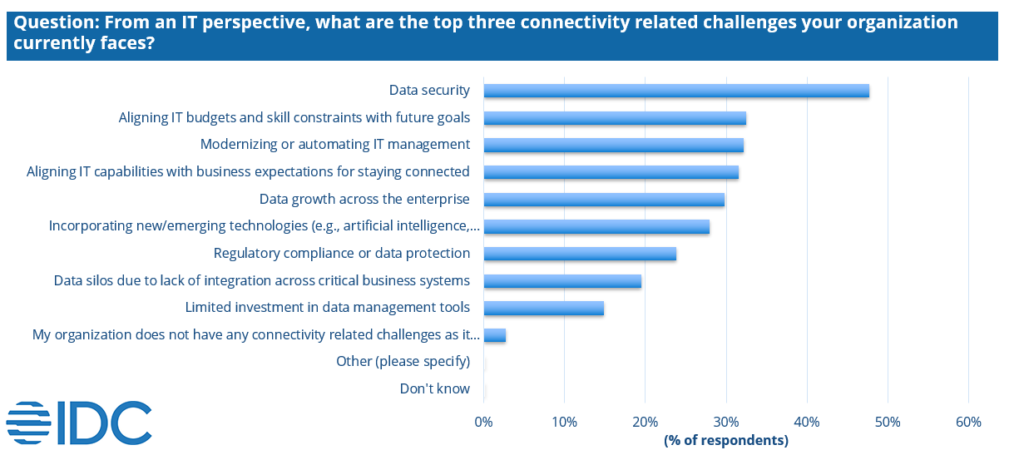
The last 18 months have taught us all how important connectivity is for our personal and professional lives and how important it is for us to adapt to change. Organizations learned quickly that business resiliency and continuity were directly tied to how connected and integrated business processes and systems were. Not surprisingly, connectivity related programs moved up the priority list almost immediately after the majority of the enterprise workforce shifted to work from home. Critical business processes had to adapt to the sudden changes, and any network or IT bottlenecks had to be removed in real time. In other words, agility became a major priority.
Today, technology related initiatives that help bring agility to an organization are ongoing, and many key areas of advancement are still accelerating. Today’s business users and the end customers have grown to expect connected digital experiences to be high quality – where data flows seamlessly behind the scenes; online interactions are uninterrupted; and every connection is seamless, secure, and reliable. This is of course facilitated by improved network throughput from wireless and wired networks, as well as pervasiveness of cloud services that reach all four corners of the globe.
Business users have expectations for sufficient broadband speeds to live, work, and play. This will only increase as all users –workers, students, governments, or individual consumers – demand pervasive digital experiences to be effective in what they are doing. As organizations continue to adapt to the new normal, bringing agility across the enterprise should be an ongoing priority, and enterprises are increasing connectivity related investments across a variety of technology areas to do exactly this.
Business Agility Investments Improve Speed, Access, and Competitive Position
With connectivity now a more critical focus, so are the technology-related initiatives that help bring agility to the business. Business users and end customers expect connected digital experiences to be fast and high quality – where data flows seamlessly behind the scenes; online interactions are uninterrupted; and every connection is seamless, secure, and reliable. These fast, high-quality digital experiences are facilitated by improved network throughput from wireless and wired networks, and pervasiveness of cloud services that help enterprises become more agile.
IDC’s ongoing Future Enterprise Resiliency and Spending Survey shows that during the first four months of 2021, more than 51 percent of enterprises have focused upwards of half their IT budgets on products and services to become more agile. IDC’s Future of Connectedness Survey reveals that a majority of enterprises expect to increase spending on cloud-based applications and networking, 5G, and managed network services to improve business agility and enhance their competitive positions.
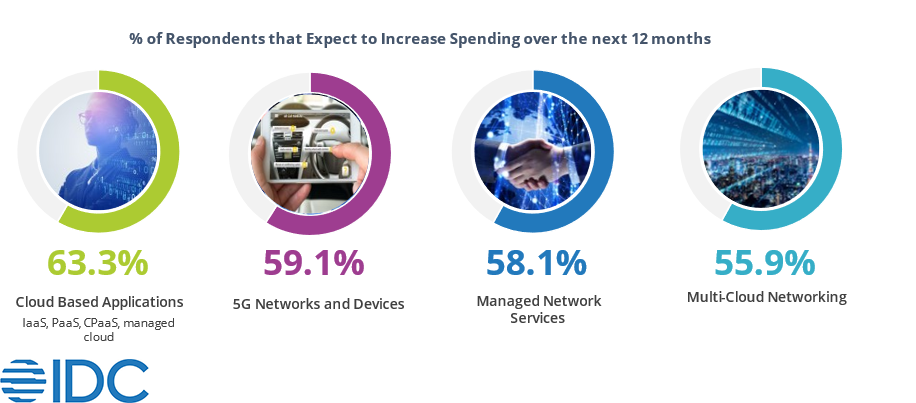
Operational Agility Investments Keep Employees Productive…Wherever, Whenever
As employees moved from office and campuses to home office environments, enterprises had no choice but to ensure that employees could do their jobs easily and effectively remotely. Employee connectivity depended on access to internal networks, processes, and applications available to those employees who rapidly shifted to work from home scenarios. Connectedness became the linchpin to ensuring operational efficiency and keeping employees productive.
A majority of enterprises are increasing investments to reduce and eliminate past operational disruptions and ensure more efficient processes, with secure remote access, cloud-based unified communications and applications, and virtual network services as top priorities for the next 12 months.
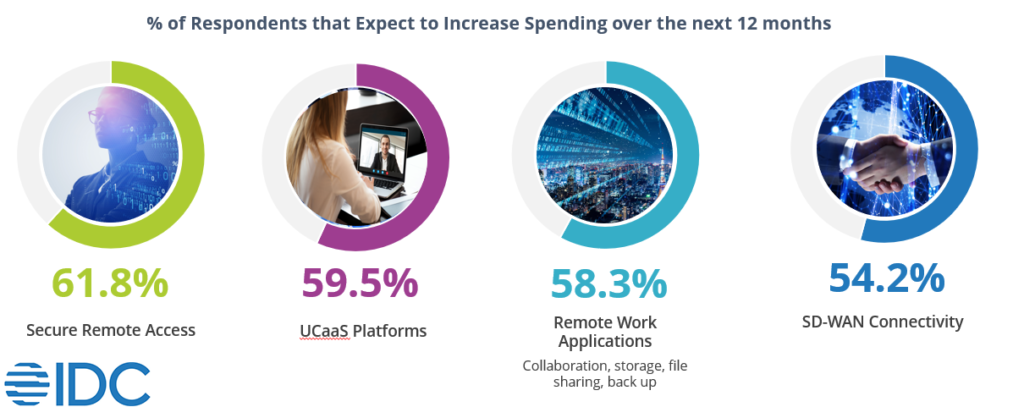
Customer Agility Investments – Because the Connected Customer is More Demanding… I mean “Always Right”
Traditional “binary” customer interactions are long gone at this point. Businesses now must embrace the newly empowered “connected customers.” More demanding. More likely to complain in an online forum that in person or on video. Higher expectations for first call resolution. Expectations for consistent and concurrent interaction regardless of contact channel.
Customer satisfaction and experience is always tied to how well a company can connect to its customers and how intelligently it can manage those interactions. As 5G and pervasive broadband create opportunities for richer digital interactions, most enterprises are increasing investments in video, AR/VR and related capabilities to deliver more personal, interactive, and digital first options to connect, but also ensuring that data from each interaction becomes readily available for each follow-on interaction to ensure a proper customer journey.
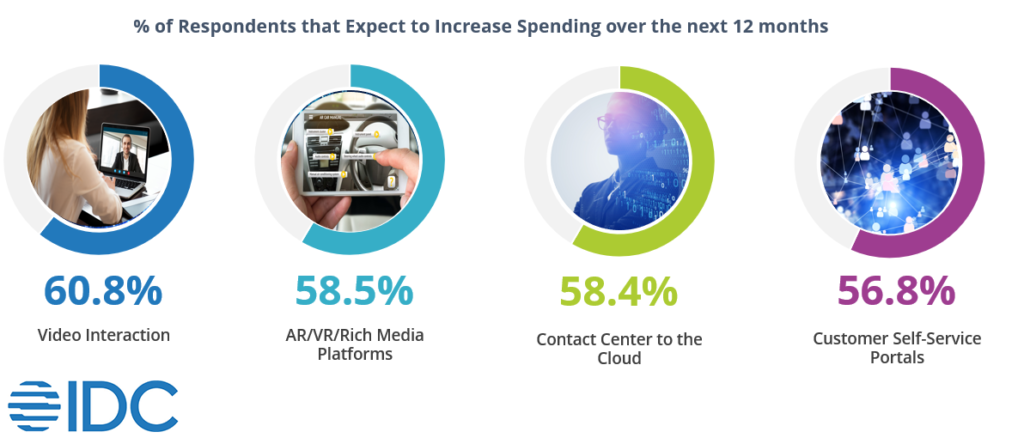
Value Chain Agility Investments – Because Connected Partners Can Sell More, Faster
For enterprises that depend on partners and VARs to sell products and services, connecting partners to customers, data, and internal stakeholders has been just as important as other areas of the business, as it ties directly to revenue. Partner-related selling is facilitated by accurate data at the right place at the right time. As selling environments shift from physical to virtual, enterprises have accelerated their digital engagement strategies with key partners, and a majority expect to increase investment in cloud-based partner onboarding and management, data analytics and management tools.
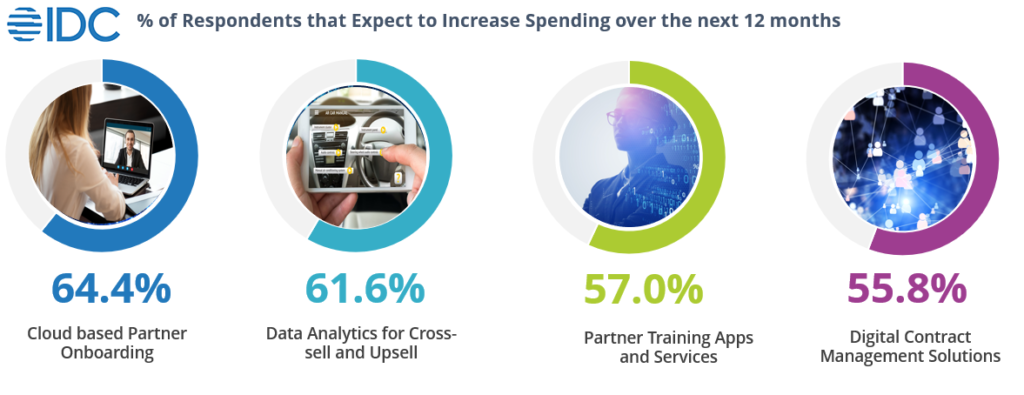
Key Takeaways
The next state of “normal” for the enterprise is not really a “state” at all. It is more of a business ideology and set of evolving principles of what an agile organization should be, how it decides to get there and what technology and processes it adopts to achieve positive outcomes and greater success. It will likely never 100 percent defined, as we simply don’t know the current global trajectory of our work and home life.
What we do know is that adapting to change IS what the next state of normal requires, and it will DEFINITELY be tied to the way that people, things, applications, and processes connect and interact with each other. Our data shows connectedness is becoming a guiding principle for enterprises…to become more automated, intelligent, and innovated. We will continue to track and evaluate enterprise investment priorities in upcoming surveys.
IDC’s Future of Connectedness Agenda program is designed to analyze today’s business priorities, identify how enterprises are addressing unevenness in connectivity internally and externally, across different environments and locations. We provide thought leadership to help align key investment areas with enterprise digital transformation and connectivity goals and provide insight into solutions from technology suppliers that help provide contextual and experiential data to drive agile business processes, interactions and decision making.
In addition to my syndicated research, I work closely with clients on custom research projects and consulting.
Join us for a webinar on September 21, as we discuss our latest Future of Connectedness survey findings.




